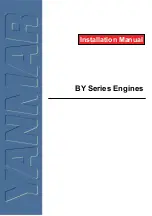
14
Small Piston Heat Engine
012-08375A
e
. Predicted transition
c
➔
d
: Continue to hold the can in the hot reservoir and predict what will happen
if the added mass that is now lifted is removed from the platform and moved onto an upper con-
veyor belt. Explain the reasons for your prediction.
f
. Observed transition
c
➔
d
: Remove the added mass and describe what actually happens. Is this what
you predicted?
g
. Predicted transition
d
➔
a
: What do you predict will happen if you now place the can back in the
cold reservoir? Explain the reasons for your prediction.
h
. Observed transition
d
➔
a
: Now it's time to complete the cycle by cooling the system down to its
original temperature for a minute or two before placing a new mass to be lifted on it. Place the can
in the cold reservoir and describe what actually happens to the volume of the trapped air. In
particular, how does the volume of the gas actually compare to the original volume of the trapped
air at point a at the beginning of the cycle? Is it the same or has some of the air leaked out?
i
. Theoretically, the pressure of the gas should be the same once you cool the system back to its
original temperature. Why?
Determining Pressures and Volumes for a Cycle
To calculate the thermodynamic work done during a cycle of this engine, you will need to be able to
plot a
P-V
diagram for the engine based on determinations of the volumes and pressures of the
trapped air in the cylinder, tubing, and can at the points
a, b, c
, and
d
in the cycle.
5.2 Activity: Volume and Pressure Equations
a
. What is the equation for the volume of a cylinder that has an inner diameter of
d
and a
length
L
?
b
. Use the definition of pressure to derive the equation for the pressure on a gas being contained by a
vertical piston of diameter
d
if the total mass on the piston including its own mass and any added
mass is denoted as
M
.
Hints:
(1) What is the definition of pressure? (2) What is the equation
needed to calculate the gravitational force on a mass,
M
, close to the surface of the Earth? (3) Don't
forget to add in the atmospheric pressure,
P
atm
, acting on the piston and hence the gas at sea level.
Now that you have derived the basic equations you need, you should be able to take your engine
through another cycle and make the measurements necessary for calculating both the volume and
the pressure of the air and determining a
P-V
diagram for your heat engine. Instead of calculating
the pressures, if you have the optional equipment available, you might want to measure the pres-
sures with a barometer or a barometer sensor attached to a computer-based laboratory system.






































